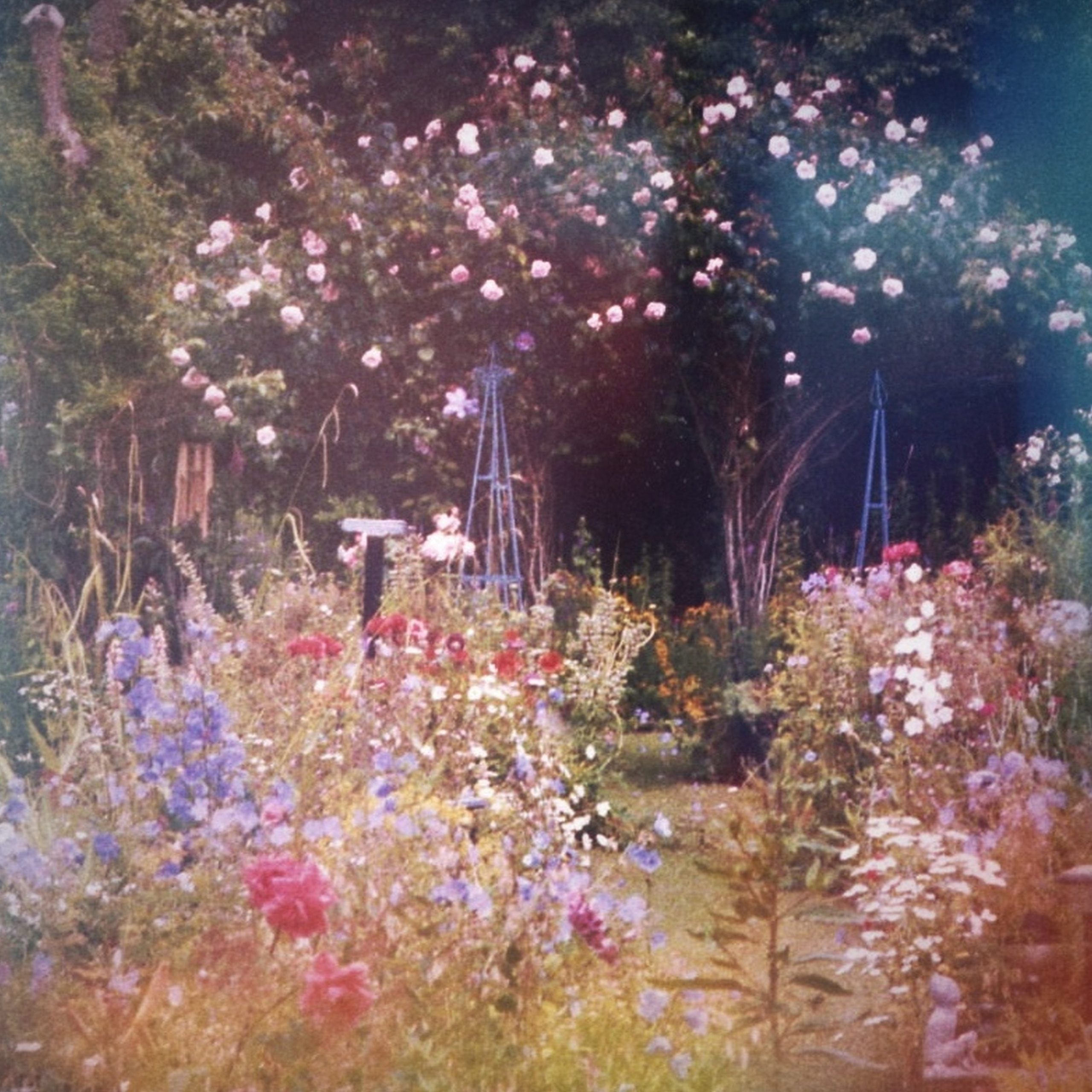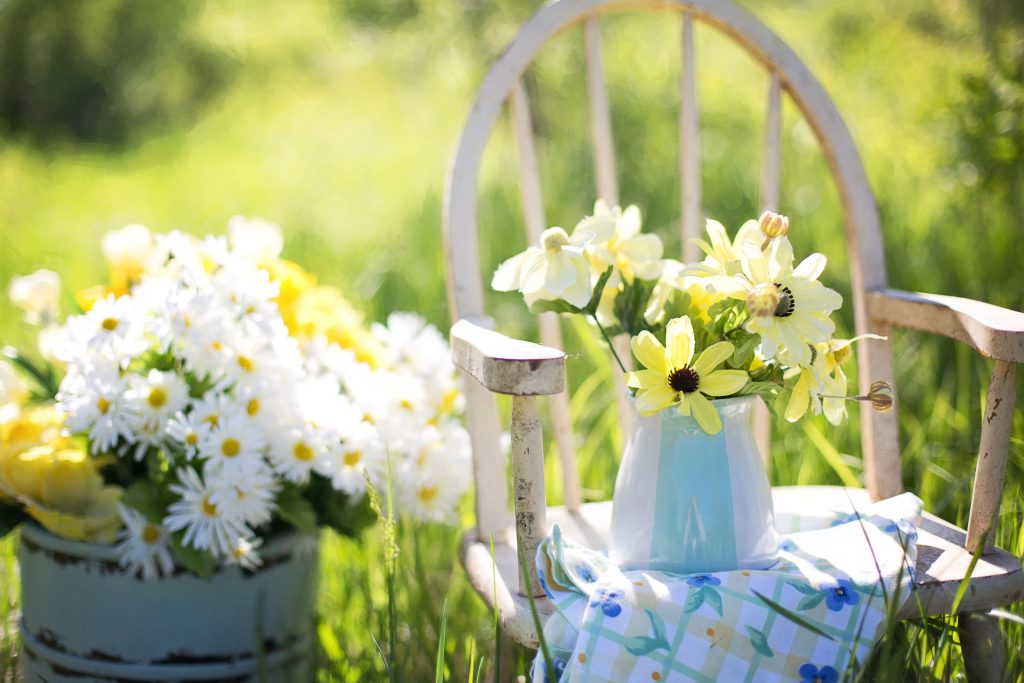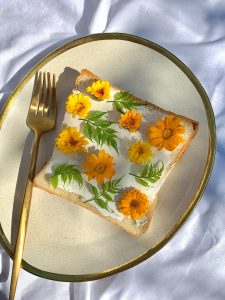You’ve probably heard of Imposter Syndrome – that nagging feeling of not being good enough. Well, I reckon there’s also a thing called Composter Syndrome and I’ve got it.
Composter Syndrome is when you think you’re good enough to compost but not to garden. Yes sir, I can compost; throw stuff in and stir, job done. But there’s no way I could get anything to actually, you know, grow.
From a young age I could memorise facts and regurgitate them, which led to a reputation in my family for being academic but not practical. It was a case of, Oh yes, our Julie can tell you the German for combine harvester but don’t ask her to change a lightbulb! Over time I formed the idea it would be better for everyone if I never got my hands on a hammer, trowel or steering wheel.
Yes, I know gardening is good or you, but am I good for gardening? I convinced myself the earth would be a better place if I kept as far away from it as possible; let those with green fingers get on with it, I’ll just keep my head in the clouds.
And then a pandemic happened. With nowhere to go and nothing to do, everybody lucky enough to have a garden sat outside and looked at it. But our garden was not much to look at. We had moved in to our newbuild home in the late ‘90s, brought up three sons there and done nothing at all to the garden. So in spring 2020 we found ourselves sitting on the six paving slabs that the builders had thrown down 20 years earlier (euphemistically called a patio) and stared at the plain rectangle of grass that ended in a football net. We were the ‘Before’ part of a garden makeover show.
For a while we took comfort from the fact that, as we live next door to Yorkshire’s answer to Monty Don, we only had to invent a reason to stand on a chair and talk over the fence to the neighbours to get a fix of beauty from Tony’s garden. There we would see roses rambling up the house walls, clematis climbing trellises, cheerful flowers bursting from pots, shrubs and bushes of various sizes and textures, a vine-covered archway, tomato plants thriving in the greenhouse, a cat statue sitting at a pond’s edge, a bird-friendly wildlife zone, wind chimes blowing gently in the breeze….I could go on but you get the picture. Everywhere you looked there was something soothing and beautiful to gaze at. We felt like The Simpsons to next door’s Ned Flanders. But there’s only so much garden-gazing by proxy you can do, and eventually I got tired of standing on a chair.
Garden centre overload
One day a gardening brochure came through the door promising the colour that was missing from my life. Leafing through the Sarah Raven catalogue, I felt it could have been designed with me in mind. The fact that I knew nothing didn’t matter because somebody who knew a lot had put selections of flowers together. I had always avoided garden centres because I was overwhelmed by sensory overload the moment I walked through the door. Garden centres seem to be for people who already know exactly what they’re doing. But here you didn‘t have to know or guess – information was everywhere, even down to how many plants would fill a pot.
So I dared to dream. Surely, I thought, even I might be able to do this. I started small with one container and some established plants – nemesia in a colour scheme of purple and burnt orange (Summer Fruit Salad Container Collection). I would never have put those colours together but they worked on the photo and, lo and behold, they worked IRL!
For us – coming from a very low place of paving slabs, gouged grass and football nets – it was a joy. My husband and I sat out with cups of tea or glasses of wine and gazed at our nemesia. Butterflies and bees came to them. The dog weed up them.
Horticulture police
Emboldened by success, I ordered more – a very pretty combination of Grandaisy Pink Halo and Artemisia along with an elaborate Butterfly Pink Pot Collection. When this lot arrived it was raining so I left them outside and took the labels off. Then I didn’t know which was which and ended up planting the wrong plants together. But you know what? They still survived and looked nice and the horticulture police didn’t come knocking (they couldn’t, we were still in lockdown).
It came as a great surprise that nature could survive me; it turned out that mother nature wasn’t the delicate little flower I had supposed.
Then I got a bit cocky. I went off-piste from Sarah Raven and ordered some geraniums from a newspaper advert which arrived as roots. Unfortunately these strange alien objects had no stickers telling you which way was up, and I must have planted them upside down. I challenge anyone to know which was the right way (OK, Tony/Monty/Ned would have known). I know this sounds like a bad workman blaming his tools, but truly there was no obvious top or bottom. Inevitably, they failed to launch. And I was annoyed – with the newspaper, with nature, and, oh all right then, with myself. What was I even thinking venturing into this green universe of which I knew nothing?
But then, watching Gardeners’ World, I heard Monty Don (the real one, not our Yorkshire version) say that even if you planted something upside down it would still grow because it wants to grow. This was a kind of epiphany for me – stuff wants to grow! I had always thought you had to trick it into doing your will. Of course, it made sense; throughout history, mankind has managed to survive by growing stuff. They can’t all have been green-fingered geniuses. (Geranium update – they grew the following year, once they realised they were heading to Australia.)
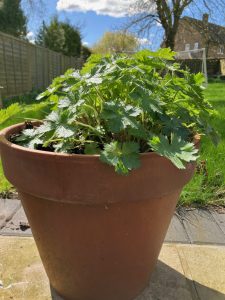
The geraniums return
This gave me confidence. A friend with an allotment told me that sometimes things don’t grow and you don’t know why, you just plough on. Maybe this was a lesson for me, to let go of outcomes and stop being a control freak. My new confidence and scant bit of knowledge gave me a basis for venturing into garden centres once they reopened.
Get me! I think, as I step further out of my comfort zone, watching gardening shows, reading gardening books, following tips from people like Poppy Okotcha, Charles Dowding, Nancy Birtwhistle, Arthur Parkinson. There’s now a reason to go outside; there’s something to look at, wildlife to watch, things to notice. Things that take me out of my own head, which is no bad thing.
There’s nothing fancy but it’s lovely to look at our clematis, honeysuckle, tulips, crocuses and the most beautiful cheery yellow rose bush called Tottering by Gently from David Austin that everybody asks me about. People asking me about roses – unbelievable!
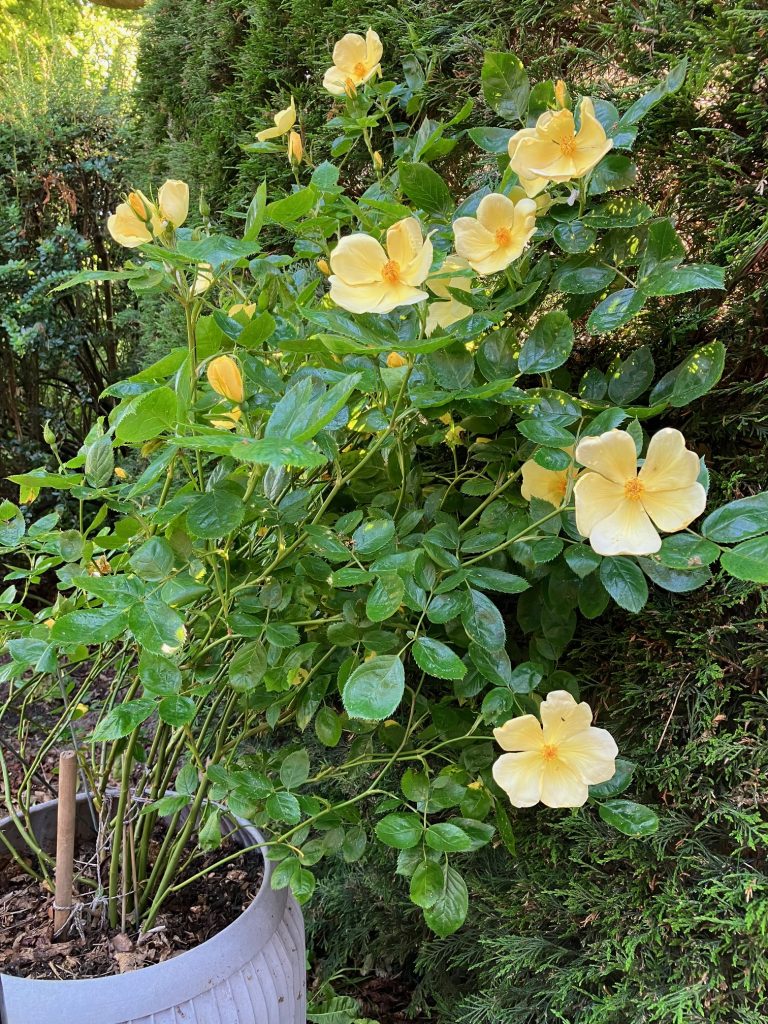
Tottering by Gently
My home compost now gets used for purposes other than mulch and it was especially handy when there were shortages of peat-free compost in garden centres during the pandemic.
Don’t get me wrong – no one’s going to pay to take a tour of our garden, but we are taking great joy from the little we have created.
This joy was to provide comfort in the face of sorrow that was to come. Many families lost loved ones during the pandemic and ours was one of them. My dear uncle was taken into hospital in January 2021, caught Covid there and never recovered.
It’s a familiar Covid story; he spent three weeks in hospital with no visitors allowed; my desperate auntie spent hours every day trying to get through on the phone to get news. When she got the call to say he would not last the night, she was told that only one of their three children was allowed to join her at his deathbed. In what must have been an agonising discussion, the two sons decided to let their sister be the one. It was to her that they gave their last messages for their father – that he was their hero, that everything they had achieved in life was thanks to him. A short funeral was attended by only 15 of the closest family members. No reception, no way for people to come together to console the family and each other.
As is the case with so many families, this grief remains frozen because the processes that civilised societies have formed over thousands of years to help us deal with death and grief were taken away.
So when, a year later, my auntie had a big birthday coming up, I wanted to get her something nice but felt that any present was pointless.
My uncle had been a miner. I can imagine that it was his years spent working underground in darkness that gave him a love of gardening. Together they were a gardening dream team – Auntie Pauline the designer, Uncle Peter the grafter.
Remembering my own nemesia from the previous year, I thought of getting my auntie the same collection and planting them in a pot for her. I told her that within weeks they would bloom into gorgeous colours, and they did; she sent me this photo (below). We both knew Uncle Peter would have loved them.
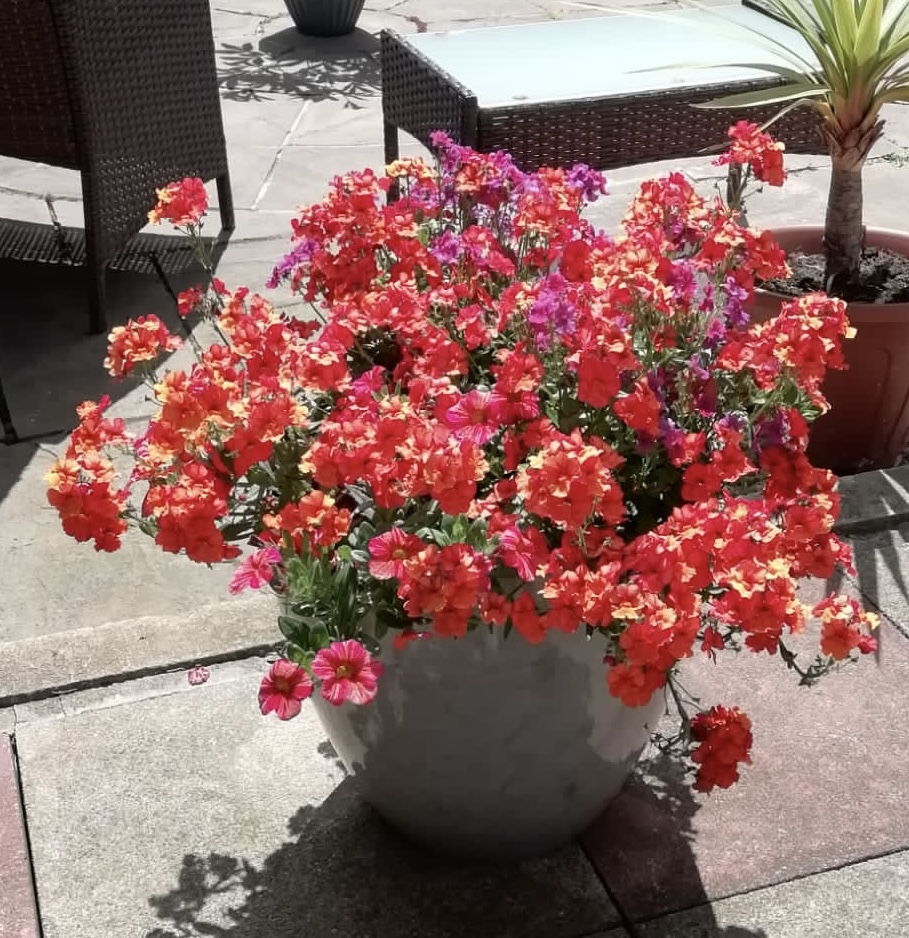
Compared to grief everything is little. But if watching a bee land on an orange flower brings a moment of grace, that moment is worth having.
It’s a feeling I’ve never had before in my garden, but now as spring comes round again and I see green leaves growing where there used to be nothing, it feels as though in some way a part of me is growing alongside them.
If this rings any bells for you, perhaps you should try it too.
Julie


